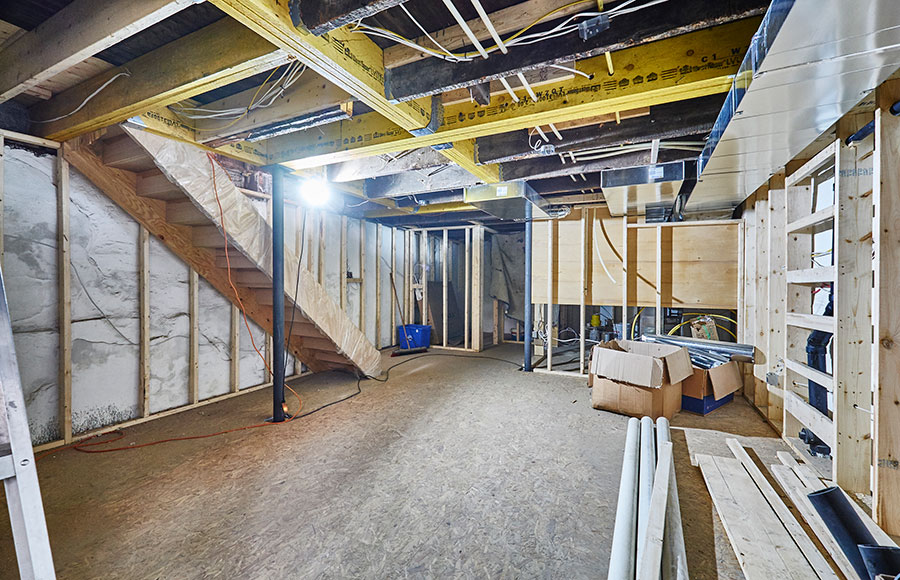
You’ve just received your home’s foundation inspection report and you’re staring at a document loaded with jargon and numbers that might as well be in a foreign language. Deciphering this report can feel intimidating, but don’t worry, it’s not as complicated as it seems. Once you understand the basic terminology and know what to look out for, you’ll be able to make sense of the report’s findings and recommendations. Now, wouldn’t you like to learn how to do this?
Key Takeaways
- Understand basic terms such as ‘footings’, ‘slab’, ‘pilings’, and ‘piers’ to interpret technical language in the report.
- Look for key findings that highlight areas needing immediate attention, such as visible cracks or moisture issues.
- Pay attention to the report’s recommendations for necessary repairs, maintenance, or further professional consultations.
- Review the cost estimates and timelines for repairs to manage budget and schedule implications.
- Analyze the structural analysis insights, focusing on load distribution, soil stability, and foundation bearing capacity.
Understanding Foundation Inspection Basics
Diving into the world of foundation inspections can initially feel overwhelming. But don’t worry, you’re not alone, and you’re about to get a crash course on the basics.
Let’s start with the various foundation types. You’ve got your slab foundations, pier and beam foundations, and crawl space foundations. Each type requires a specific approach during an inspection due to their unique characteristics and potential problem areas.
Next up is inspection frequency. It’s not something you need to do every year, but you shouldn’t ignore it for too long either.
How often you should get your foundation inspected depends on several factors such as its age, construction type, and the region’s weather conditions. But as a rule of thumb, an inspection every 5-10 years is a safe bet.
Decoding Professional Jargon
You’ve got the basics down, now let’s tackle the technical terms often found in foundation inspection reports.
This jargon can seem intimidating, but don’t worry, we’re going to break down these terms and show you how to interpret the findings.
Understanding Technical Terms
Steering through the complex language of a foundation inspection report can be an intimidating task.
To break down this barrier, it’s essential to understand the foundation terminology and debunk common misconceptions.
Here’s a simple three-step guide to help you navigate:
- Get acquainted with basic terms: Start by familiarizing yourself with basic foundation terms such as ‘footings’, ‘slab’, ‘pilings’ and ‘piers’. Each of these terms refers to different components of a foundation, and understanding them can provide a clearer picture of the report findings.
- Understand common misconceptions: Many people assume that all cracks signify a serious foundation problem. However, not every crack is a cause for concern. Some are merely cosmetic and pose no threat to the integrity of your foundation.
- Ask questions: If you’re unsure about certain terms or findings, don’t hesitate to ask your inspector. They’re there to help and can explain any technical jargon in layman’s terms.
Interpreting Report Findings
Once you’ve mastered the basic terminology, it’s time to interpret the findings in your foundation inspection report. This is where you decode the professional jargon to understand the condition of your foundation.
Consider foundation stability and inspection accuracy as your top concerns. These are key indicators of the overall health of your home’s foundation and the reliability of the report you have in hand.
To guide you, here’s a table of common terms and their interpretations:
| Term | Interpretation |
|---|---|
| Settlement | The downward movement of your foundation. Too much indicates instability. |
| Displacement | The horizontal shift in your foundation. This can cause structural damage. |
| Cracking | The presence of cracks. Small ones may be normal, but large or numerous cracks signal trouble. |
| Dampness | The presence of moisture. This can weaken the foundation and lead to mold. |
Identifying Key Report Sections
Now, let’s move on to understanding the key sections of the foundation inspection report.
You’ll need to get a handle on report terminology, interpret the fine details of the structure, and make sense of the damage assessment.
It’s essential to grasp these sections as they paint a clear picture of your foundation’s health.
Understanding Report Terminology
Diving right into the heart of a foundation inspection report can seem overwhelming at first, especially with all the technical jargon.
However, understanding the report terminology can make the process less overwhelming. Grasping the foundation terminology and inspection language is critical as it allows you to better comprehend the condition of your property.
Here’s a simple guide to help you interpret the key terms:
- Settlement: This term signifies the downward movement of your foundation due to soil compression. A significant amount of settlement can inflict serious damage to your home.
- Heave: This is the upward movement of your foundation caused by soil expansion. If you notice doors and windows sticking, it could indicate foundation heave.
- Subsidence: This term refers to the sinking of land or a building. It’s often caused by soil shrinkage due to changes in moisture.
Analyzing Structural Details
With a basic understanding of the report terminology under your belt, let’s move forward to scrutinize the structural details of the foundation inspection report.
It’s crucial to understand how different elements relate to each other and the overall foundation integrity.
Look for a section on load distribution. This details how the weight of the building is supported by the foundation. Imbalances can lead to settlement patterns and crack formation.
The report should also discuss soil composition. Certain soil types can affect foundation stability, especially in areas with seismic considerations.
Next, check out the foundation types and reinforcement techniques used. Are they appropriate for the building and the soil? Are there signs of wear or damage? Your report should answer these questions.
Drainage systems are another key structural detail. Poor drainage can lead to high moisture levels, which can compromise the foundation.
This section should also mention any existing repair methods.
Interpreting Damage Assessment
Understanding the damage assessment section is essential in your foundation inspection report. This part gives you key insights into the current state of your property’s foundation. It’s where you’ll find detailed information about cracking patterns, moisture levels, soil conditions, and other vital factors.
- Cracking patterns and moisture levels: Look for descriptions and illustrations of any cracks in the foundation. The size, location, and pattern of these cracks can tell you a lot about the underlying issues.
Similarly, high moisture levels can indicate drainage issues or other water-related problems.
- Soil conditions and settlement concerns: The report should provide information about the soil around your foundation. Poor soil conditions can lead to settlement concerns and uneven load distribution, which can cause significant damage over time.
- Repair options and reinforcement techniques: Once the damage is assessed, the report will recommend repair options. This could range from simple fixes to more complex reinforcement techniques.
These recommendations are vital when planning your next steps.
Interpreting Structural Analysis
When you explore the structural analysis section of a foundation inspection report, you’re stepping into the core of the document. This section is vital as it provides insights into the building’s load distribution and soil stability, two key factors in maintaining a sturdy foundation.
Load distribution refers to how the weight of the structure is spread across the foundation. Ideally, the load should be evenly distributed to avoid undue stress on any specific area. If the report indicates uneven load distribution, it’s a sign the foundation may not be bearing the weight as it should, which can lead to problems down the road.
Soil stability is another essential factor. The soil around and beneath the foundation must be stable enough to support the structure’s weight. If it’s not, the foundation may shift or sink, which can cause serious structural issues.
The report will typically include a soil stability analysis, detailing the type of soil and its capacity to support the building.
Recognizing Potential Foundation Issues
Nearly every foundation inspection report will highlight potential issues that could signal trouble. Recognizing these issues is essential to maintaining your property’s structural integrity. A thorough cracks analysis will identify any irregularities in your foundation, and these could indicate a serious problem.
Soil conditions are another key factor. If the soil around your foundation can’t adequately support the structure, you may notice settlement patterns or even foundation movement.
And let’s not forget about drainage issues. Poor drainage can lead to high moisture levels, which can damage certain foundation types and even cause health problems.
To help you recognize potential foundation issues, consider these inspection techniques:
- Visual Inspection: Look for obvious signs of damage, such as cracks or buckling walls.
- Moisture Testing: Check the moisture levels in and around your foundation to identify potential drainage issues.
- Soil Analysis: Examine the soil conditions to detect any changes that could affect your foundation’s stability.
Understanding these issues won’t just help you interpret your inspection report—it’ll also give you a head start on considering repair options.
But remember, recognizing potential issues is just the first step.
Taking Action After Inspection
Armed with the knowledge from your foundation inspection report, it’s time to decide on the next steps. You’ve got to take into account your remedial options, repair strategies, and maintenance tips.
Here’s a table to make it easier:
| Remedial Options | Repair Strategies | Maintenance Tips |
|---|---|---|
| Professional Recommendations | Cost Estimates | Timeline Expectations |
| Safety Precautions | Warranty Considerations | Regular Inspections |
| Contractor Selection | Budget Planning | Preventative Measures |
Professional recommendations are your first remedial option. They’ll guide you through safety precautions and help you select the right contractor. Repair strategies will involve getting cost estimates and evaluating warranty options. Don’t forget to plan your budget accordingly.
Maintenance tips, meanwhile, involve getting a sense of timeline expectations. Regular inspections play a vital role in foundation maintenance, as do preventative measures.
Take the information from your report, weigh your options, and make a confident, informed decision. It’s not just about repairing the present damage; it’s about preventing future problems. So, don’t just focus on the immediate fix – think about the long-term health of your foundation too.
Frequently Asked Questions
What Qualifications Should a Professional Foundation Inspector Possess?
You should look for a foundation inspector with solid qualifications.
They’ll need to meet certain certification requirements, showing they’re well-trained in their field.
Consider their experience too; you’ll want someone who’s inspected a variety of foundation types.
Don’t be shy to ask for proof of their certification or details about their experience.
It’s your right to know you’re hiring a true professional.
How Often Should I Schedule a Foundation Inspection?
You should schedule a foundation inspection typically once a year.
However, if you’re living in an area with extreme weather variations, you might want to contemplate seasonal inspection recommendations.
Foundation inspection frequency can increase if you notice signs of damage like cracks or water leaks.
It’s better to catch potential issues early, so don’t put off inspections.
Can I Conduct a DIY Foundation Inspection?
Sure, you can conduct a DIY foundation inspection.
You’d need to learn some DIY inspection techniques like checking for cracks or irregularities in the foundation.
Look for signs of foundation damage such as bulging walls, cracked or buckling floors, and doors that don’t close properly.
However, it’s important to remember that a professional inspector can provide a more thorough assessment.
What Is the Average Cost of a Foundation Inspection?
You’re wondering about foundation inspection pricing.
On average, you’re looking at a range from $200 to $400. However, the exact cost can vary based on several inspection cost factors.
These can include the size of your property, the foundation type, location, and whether there are any specific issues you want checked.
It’s always best to get a few quotes from different inspectors to guarantee you’re getting a fair price.
Does Homeowners Insurance Typically Cover Foundation Repairs?
Typically, your homeowner’s insurance doesn’t cover foundation repairs.
It’s generally considered part of home maintenance. However, if foundation damage is caused by a covered peril like a flood, you might be covered.
You’ll need to review your policy and possibly start the insurance claim process.
It’s essential to understand the causes of foundation damage and how your insurance policy handles them.
Always consult your insurance provider for precise information.
Conclusion
Don’t be daunted by a foundation inspection report. Once you grasp the basics and decode the jargon, you’ll understand what’s at stake. Focus on key sections, interpret the structural analysis, and pinpoint potential issues. Remember, this report isn’t just about identifying problems, it’s a roadmap for action. Follow the recommended steps, consider cost estimates and timelines, and you’ll maintain your foundation’s integrity. After all, your foundation’s health is essential to your home’s overall stability.

Seal-tite Basement Waterproofing Co. is a full service basement environment contractor. We carry an A+ Better Business Bureau rating. We repaired over 40,000 homes and structures in Virginia, West Virginia, Tennessee, and North Carolina. We are fully insured and licensed. We have worked in all types of locations, including residential and commercial locations, government agencies, colleges, hospitals, churches, and condo associations.
Seal-tite® offers a lifetime transferable warranty. We carry a Class A Contractor’s License and we are fully insured. Our satisfied customers range from government agencies to businesses, hospitals, colleges, churches, and thousands of homeowners. Your home is probably the single largest investment you will make in your lifetime. Don’t wait, call Seal-tite® to help make your home dry, safe and livable.

